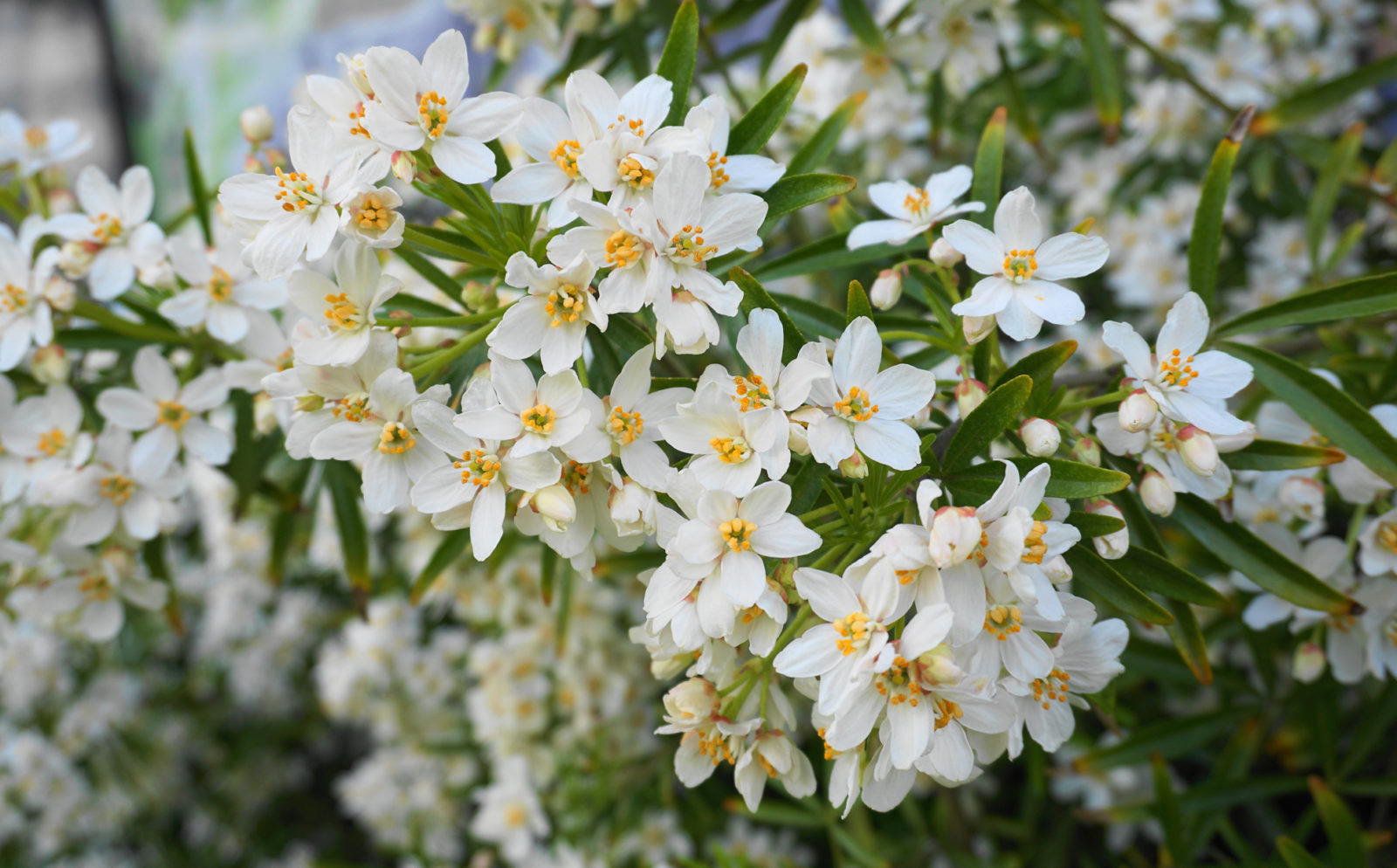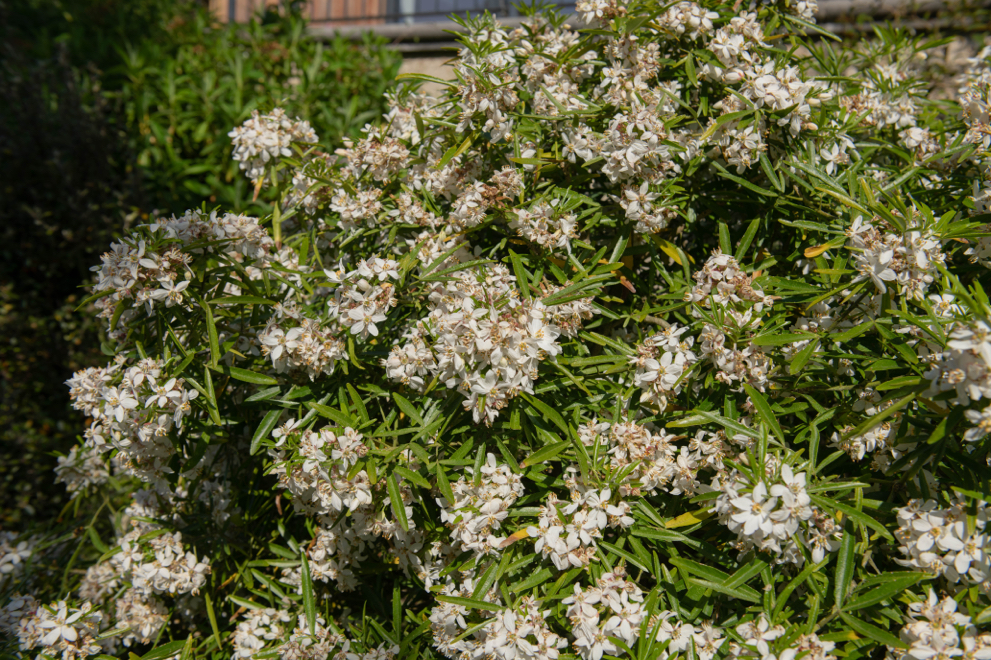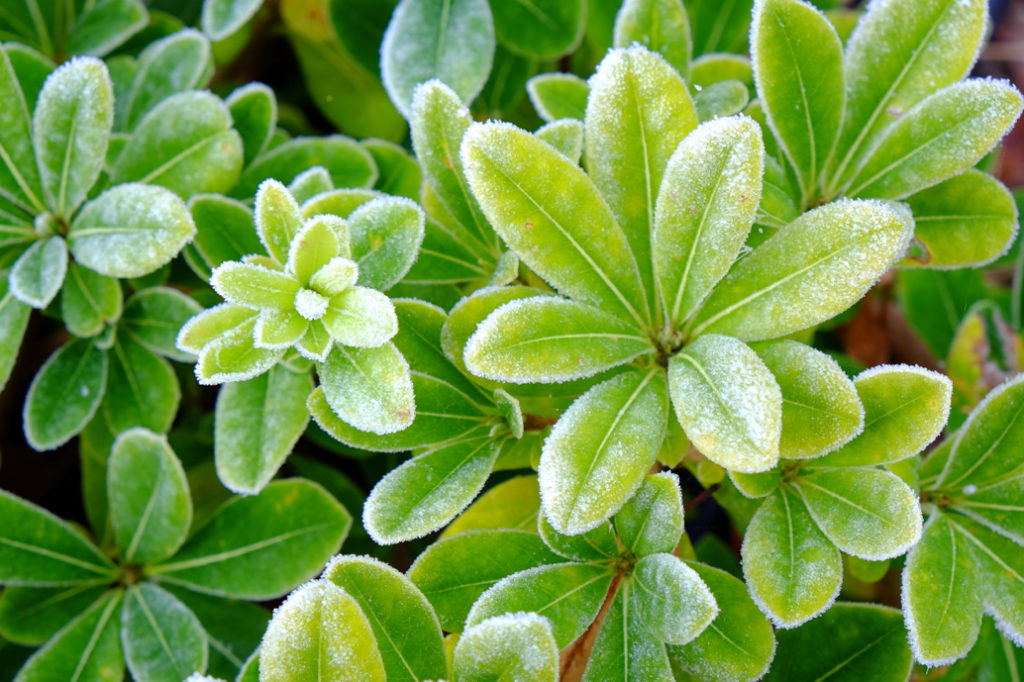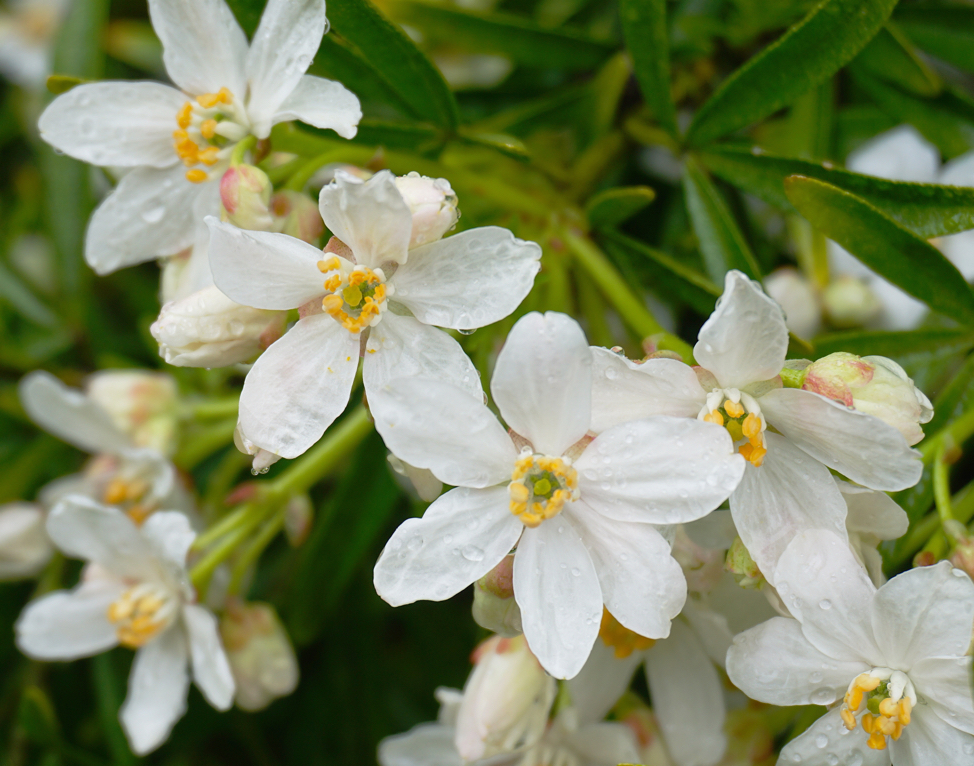These Are The Soil Composition, Drainage & pH Levels To Aim For With Choisya Plants

Reviewed By COLIN SKELLY

Colin is a Horticulturist and Horticultural Consultant with experience in a range of practical and managerial roles across heritage, commercial and public horticulture. He holds the Royal Horticultural Society’s Master of Horticulture award and has a particular interest in horticultural ecology and naturalistic planting for habitat and climate resilience.
CHOISYA GUIDES
Container Growing
Pruning
Soil Requirements
Varieties
Yellowing Leaves
With their attractive evergreen foliage and fragrant white blossoms, choisyas are a popular choice in gardens up and down the UK.
Their ease of cultivation and versatility among other specimens only enhances their appeal.
Originally hailing from Mexico, choisya plants have adapted extremely well to the British climate and will thrive well in most parts of the country.1Choisya ternata. (n.d.-b). North Carolina Extension Gardener Plant Toolbox. Retrieved March 14, 2023, from https://plants.ces.ncsu.edu/plants/choisya-ternata/
Having said that, they will perform best when their soil preferences are met and they are grown in the optimum conditions.
With that in mind, here’s a quick rundown of the factors you should bear in mind when planting choisyas either in the ground or in a container.
Soil Composition, Fertility & pH Levels
Choisyas are largely unfussy creatures and will generally make the most of whatever soil you give them, regardless of whether it’s predominantly composed of clay, loam, sand or chalk.
However, fertile soil is always preferable.
It’s a similar story when it comes to the pH levels of the soil, as they will cope well in acid, neutral or alkaline soils.

Having said that, choisyas don’t like any terrain which is either excessively acidic or alkaline, so temperance is the name of the game here.
Perhaps more important than the quality of the soil itself is the conditions which affect it.
Therefore, you may find that the following factors have more of a bearing on your Choisya’s performance than the soil composition.
Aspect
Generally speaking, choisyas need their fair share of sun to thrive.
That’s especially true in colder parts of the country, so selecting a location with full sun (or only partial shade, at a push) is recommended.
They’ll also benefit from protection from the wind and elements, so being positioned by a wall or fence is ideal.
Most choisya species are hardy down to around -10°C, but will struggle with the frost in the soil thereafter.

Therefore, those living in chilly regions of the UK might want to consider planting their specimen in a container to allow for ease of movement to an indoor location during winter.
If planting in a pot, a general rule is that the larger the receptacle, the happier both you and your choisya will be.
This is because it will not only have the space it needs for its roots to develop, but it will require watering less frequently.
Drainage
As with many plants, drainage is the all-important factor for choisyas, since the plant simply cannot stand getting its feet too wet, as Horticulturist Colin Skelly explains:
“The soil type will make a difference to moisture holding around the roots of plants.
“The main culprit for plants that like free-draining conditions is clay, with heavy clay holding onto moisture like a sponge.
“In these conditions, you will need to find the highest part of the garden or amend the soil structure with de-compaction and compost to allow moisture to flow more freely around the plant’s roots.”

In waterlogged soil, it will falter and fade, eventually dying due to the excess water.
As a result, it’s imperative that you choose a well-draining location for your choisyas in your garden.
If your soil is not naturally amenable to good drainage, you may wish to give it a helping hand by raking it over and using an aerator if you have one (a hand trowel or rake will suffice if you don’t).
You can also artificially enhance drainage by adding compost or raising the planting area above the surrounding terrain via the use of a mound or berm to allow water to flow downwards more efficiently.
References
- 1Choisya ternata. (n.d.-b). North Carolina Extension Gardener Plant Toolbox. Retrieved March 14, 2023, from https://plants.ces.ncsu.edu/plants/choisya-ternata/

